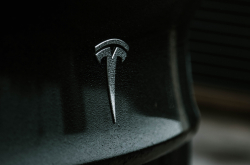Why still no contact with alien civilizations? Icy oceans on other plants might be to blame, according to Science. “Most extraterrestrial creatures are likely deep inside their home planets, in subsurface oceans crusted over in frozen water ice. The hypothesis could explain the lack of signals from other technologically advanced civilizations, especially if they think that everyone else is trapped in their own icy bubbles.”
Mission to Mars could make own oxygen. Plasma technology could hold the key to creating a sustainable oxygen supply on Mars, according to research by universities of Lisbon and Porto, and École Polytechnique in Paris. It suggests that Mars, with its 96 per cent carbon dioxide atmosphere, has nearly ideal conditions for creating oxygen from CO2 through a process known as decomposition. The pressure and temperature ranges in the Martian atmosphere mean non-thermal plasma can be used to produce oxygen efficiently.
Machine learning predicts earthquakes. A group of researchers from the UK and the US have used machine learning techniques to successfully predict earthquakes. Although their work was performed in a laboratory setting, the experiment closely mimics real-life conditions, and the results could be used to predict the timing of a real earthquake. Researchers used machine learning techniques to analyze the acoustic signals coming from the 'fault' as it moved and search for patterns.
Physics boosts artificial intelligence methods. Researchers from Caltech and the University of Southern California (USC) report the first application of quantum computing to a physics problem. By employing quantum-compatible machine learning techniques, they developed a method of extracting a rare Higgs boson signal from copious noise data. Higgs is the particle that was predicted to imbue elementary particles with mass and was discovered at the Large Hadron Collider in 2012. The new quantum machine learning method is found to perform well even with small datasets, unlike the standard counterparts.
Flexible skin helps robots feel. Engineers from the University of Washington and UCLA have developed a flexible sensor "skin" that can be stretched over any part of a robot's body or prosthetic to accurately convey information about shear forces and vibration that are critical to successfully grasping and manipulating objects, from cooking to egg to dismantling a bomb.




